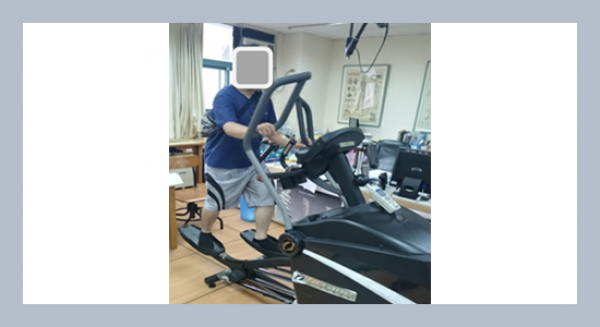REFERENCES
- Arzumanyan, A., Sahakyan, E., Hovhannisyan, A. 2015. The effectiveness of using dolomite raw materials of Armenia for the production of building materials. Collection of Scientific Works of the National Academy of Sciences of Armenia, 3, 119–124.
- Arzumanyan, Ar., Gevorgyan, H., Arzumanyan, Av., Muradyan, N. 2018. Investigation of the heat resistance of volcanogenic tuffs of Armenia for assessment of their suitability as fillers for refractory lightweight concretes. NUACA Bulletin. 4, 31–40.
- Arzumanyan, A., Arzumanyan, A., Muradyan, N. 2019. Heat-acid-resistant light concretes on the base of volcanic tuff lava and pumice aggregates of Armenia. Key Engineering Materials, 828, 141–145.
- Al-Zboon, K.K., Al-smadi, B.M. Al-Khawaldh, S. 2016. Natural volcanic tuff-based geopolymer for zn removal: Adsorption isotherm, kinetic, and thermodynamic study. Water Air Soil Pollut 227, 248.
- Azimi, E.A., Abdullah, M.M.A.B., Ming, L.Y., Yong, H.C., Hussin, K., Aziz, I.H. 2016. Review of dolomite as precursor of geopolymer materials. In MATEC Web of Conferences, 78, 01090.
- Badalyan, M.M., Karapetyan, A.K., Muradyan, N.G., Ratevosyan, S.S. 2021. Possibility of tuff waste application in the production of thermal insulation materials. Journal of Architectural and Engineering Research, 1, 7–12.
- Dvorkin, L. 2011. Building materials mineral binders/OL Dvorkin. M. Infra-Engineering.
- El-Shafie, Y.M. 2020. Waste from stone industry as a cement additive towards a reduced carbon footprint of concrete (Doctoral dissertation, University of Stuttgart).
- GOST 9479-2011 (EN 1467:2003, NEQ) Rough blocks for manufacture of facing, architectural and building, memorial and other products. Specifications.
- Játiva, A., Ruales, E., Etxeberria, M. 2021. Volcanic ash as a sustainable binder material: An extensive review. Materials, 14, 1302.
- Djobo, J.N.Y., Elimbi, A., Tchakouté, H.K., Kumar, S. 2017. Volcanic ash-based geopolymer cements/concretes: The current state of the art and perspectives. Environmental Science and Pollution Research, 24, 4433–4446.
- Mohammed, B.S., Haruna, S., Wahab, M.M.A., Liew, M.S., Haruna, A. 2019. Mechanical and microstructural properties of high calcium fly ash one-part geopolymer cement made with granular activator. Heliyon, 5.
- Manturov, Z.A., Toturbiev, A.B. 2007. Silikat-natriyevyye kompozitsionnyye vyazhushchiye iz promyshlennykh otkhodov dlya proizvodstva zharostoykikh teploizolyatsionnykh materialov. Vestnik DGTU. Tekhnicheskiye nauki №13. (in Russian).
- Manturov, Z.A. 2012. Bezobzhigovoye kompozitsionnoye vyazhushcheye iz mestnykh kremnistykh kremnistykh porod i bezvodnogo silikata natriya, modifitsirovannoy shchelochesoderzhashchey dobavkoy. Fundamental'nyye Issledovaniya 11, 153–157. (in Russian).
- Mehmood, M., Yaseen, M., Khan, E.U., Khan, M.J. 2018. Dolomite and dolomitization model–A short review. International Journal of Hydrology, 2, 549–553.
- Muradyan, N. 2020. Determination of technological characteristics of cementless stone production from the waste of volcanic rock extraction. Bulletin of National University of Architectur and Construction of Armenia, 2, 92–107.
- Rybyev, I. 2008 Stroitel'noye materialovedeniye. Vysshaya shkola, Moskva 2008, 701s.
- Saakyan, E., Arakelyan, G., Akhparyan, N. 2013. Fiziko-khimicheskiye protsessy otverzhdeniya zhidkogo stekla dunitovym otverditelem Byulleten': NUASA. 2, 94–97.
- Sahakyan, E., Arzumanyan, A., Muradyan, N. 2019. Physical and chemical processes of volcanic rock hardening with alkaline silicates. In IOP Conference Series: Materials Science and Engineering, 698, 022078.
- Sahakyan, E., Arzumanyan, A. 2021. Dolomite-based water-resistant concretes. Contemporary Problems of Architecture and Construction: Proceedings of the 12th International Conference on Contemporary Problems of Architecture and Construction (ICCPAC 2020), 271–274.
- Sahakyan, E., Arzumanyan, A., Muradyan, N. 2022. inorganic polymeric materials based on natural silicate and aluminosilicate raw materials. Key Engineering Materials, 906, 1–6.
- Sychev, M.M. 1986. Inorganic adhesives. Leningrad: Khimiya, 152.
- Yu Z., Zhang T., Deng Y., Y. Han, Zhang T., Hou P., Zhang G. 2023. Microstructure and mechanical performance of alkali-activated tuff-based binders. Cement and Concrete Composites, 139, 105030.
- Warren, J. 2000. Dolomite: Occurrence, evolution and economically important associations. Earth-Science Reviews, 52, 1–81.















